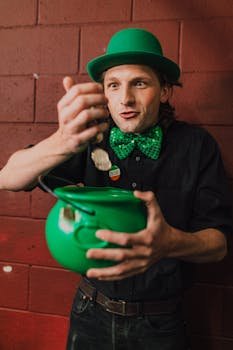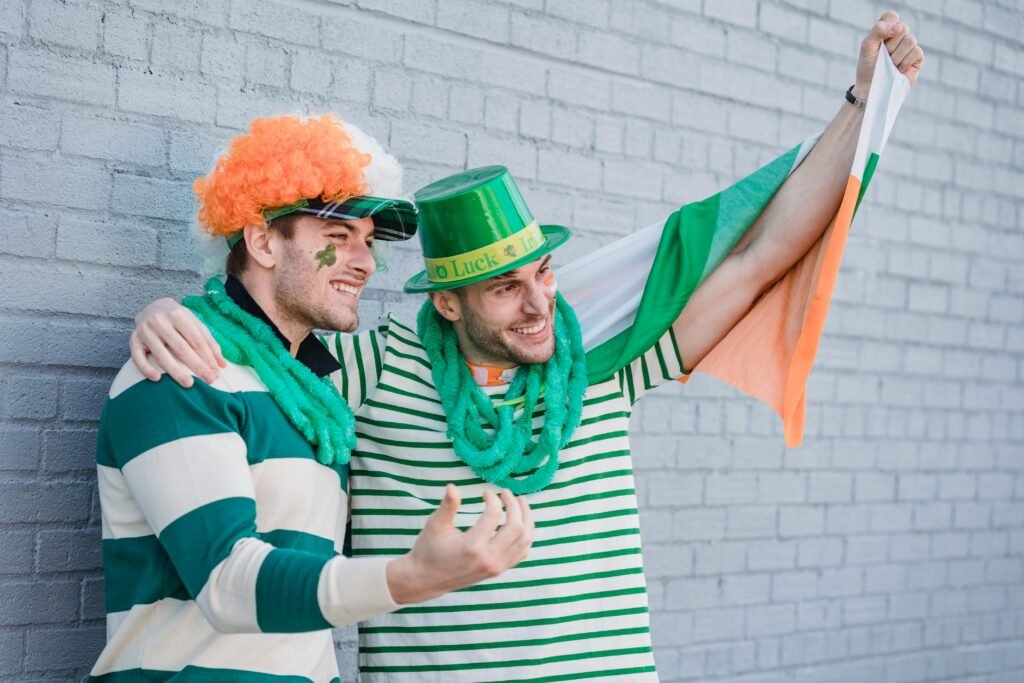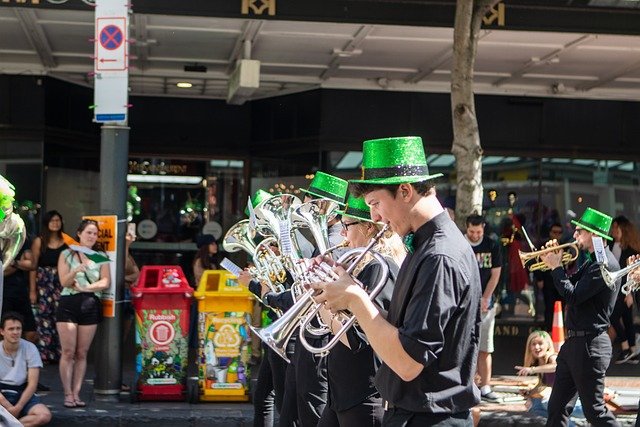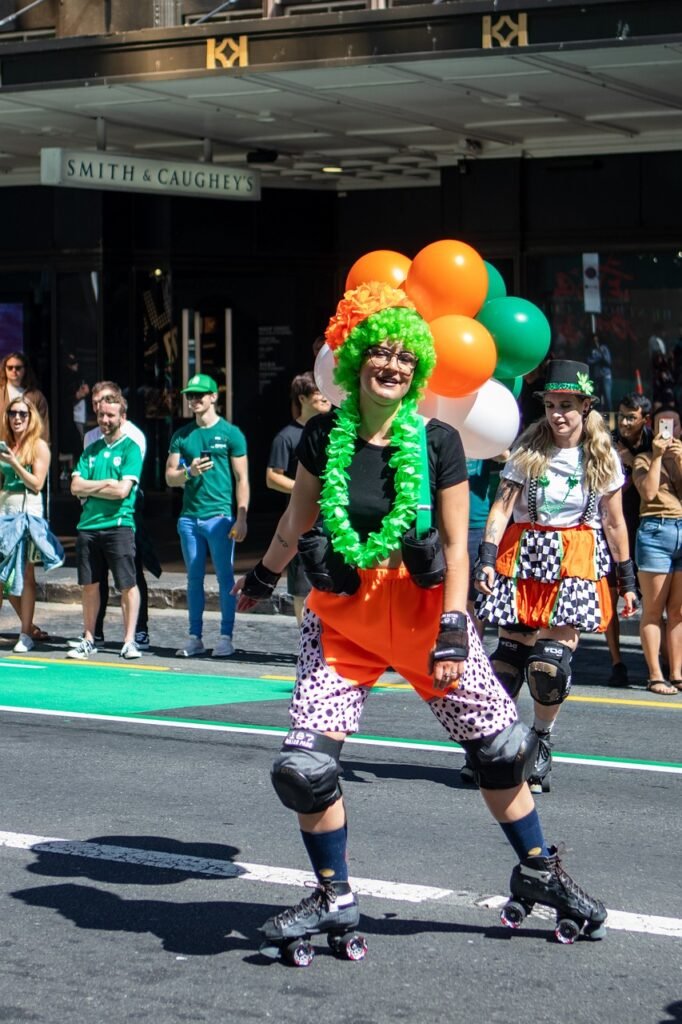The Origins of St. Patrick’s Day
St. Patrick’s Day is widely recognized as a celebration of Irish culture and heritage, but its origins trace back to the life and mission of St. Patrick himself. Born in Roman Britain during the late 4th century, St. Patrick was kidnapped at the age of sixteen and taken to Ireland as a slave. After six years, he escaped, returning to his family. However, he felt a calling to return to Ireland to convert the pagan Irish to Christianity. His missionary work was pivotal in establishing Christianity across Ireland. Leading to his eventual recognition as the country’s patron saint.

The association of March 17th, his feast day, as St. Patrick’s Day began in the early 17th century, officially becoming a religious observance. The day not only commemorates St. Patrick’s contributions but also serves as a day of reflection for Irish people both at home and abroad. Initially a solemn occasion marked by prayer and reflection, over time, the celebration evolved into a more festive holiday characterized by public celebrations, parades, and the wearing of green attire—attributes of Irish nationalism and pride.
Historically, early celebrations of St. Patrick’s Day included feasting and the consumption of alcohol, which were in contrast to the somber religious observance. By the 18th century, Irish immigrants began to celebrate St. Patrick’s Day in North America, further embedding the holiday into the cultural fabric of both Ireland and the global Irish diaspora.
As the years passed, the day transformed into a vibrant celebration marked by parades, music, dancing, and a sense of community. Essentially paving the way for the jovial festivities we associate with St. Patrick’s Day today. It is this unique blend of history and culture that continues to enrich the significance of the holiday in Ireland and around the world.

The Myths and Symbols of St. Patrick’s Day
Myths
St. Patrick’s Day, celebrated on March 17th, is steeped in a rich tapestry of myths and symbols that reflect both its religious significance and the cultural heritage of Ireland. One of the most widely recognized myths is that of St. Patrick banishing snakes from Ireland. According to legend, the saint drove out these reptiles, symbolizing the eradication of pagan practices and the triumph of Christianity. Notably, historical evidence suggests that there were no snakes in Ireland, leading many to interpret this tale as a metaphor for St. Patrick’s spiritual mission rather than a factual account of events.
Shamrock
Another enduring symbol associated with St. Patrick is the shamrock. It is said that the saint used this three-leaved plant to explain the concept of the Holy Trinity—Father, Son, and Holy Spirit—to the Irish people. The shamrock has since become a national emblem, embodying Irish identity and culture. During celebrations, it is common to see shamrocks incorporated into various decorations and merchandise. People often wear these leaves as a way to honor their heritage and commemorate the legacy of St. Patrick.

In addition to the shamrock, other symbols are prevalent during St. Patrick’s Day festivities. The leprechaun, a mischievous fairy from Irish folklore, is often depicted as guarding a pot of gold. This character encapsulates the playful spirit of the holiday. Furthermore, the color green is ubiquitous during celebrations, symbolizing the lush landscapes of Ireland, as well as life, renewal, and the pre-Christian Celtic connection to the earth.
These myths and symbols not only add a captivating dimension to St. Patrick’s Day celebrations but also serve as reminders of the enduring cultural narratives that define Ireland’s rich history. As people participate in parades, wear green, and share in the revelry, they engage with these stories and contribute to the ongoing legacy of St. Patrick’s Day.
What to Wear on St. Patrick’s Day
St. Patrick’s Day is a remarkable occasion, celebrated not only in Ireland but around the globe, manifesting an exuberant display of culture and tradition. Central to the festivities is the concept of festive attire, with green being the quintessential color. Wearing green symbolizes the lush landscapes of Ireland, while it is also associated with the shamrock, which St. Patrick famously used to explain the concept of the Holy Trinity. This has led to a custom where people of all ages don the vibrant hue on this special day.

Classic attire
In terms of traditional clothing, many individuals opt for elements that celebrate Irish heritage. Classic attire such as a tweed cap or an Aran sweater can be commonly spotted in parades or gatherings. Additionally, some enthusiasts might choose to wear traditional Irish dance costumes, with their intricate designs showcasing a rich cultural history. Contemporary interpretations show a range of styles, from casual green T-shirts embellished with clever slogans to more formal attires incorporating green accessories.
Accessories are essential to complete the festive look. Green hats, particularly those shaped like leprechauns, are popular choices among both children and adults. Beaded necklaces, often in shades of green or adorned with shamrock designs, add festive flair to any outfit. Face paint is also frequently utilized, allowing revelers to express their excitement and engage in the spirited atmosphere. Depending on the region, variations in attire can be observed; for example, some areas might favor the incorporation of Celtic symbols or even local sports jerseys that bear green hues and represent community pride.
The diverse expressions of attire on St. Patrick’s Day highlight not only a commitment to tradition but also an embrace of modernity. Whether one opts for a traditional ensemble or a contemporary outfit, the emphasis remains on celebrating the rich cultural narrative of Ireland, fostering a sense of unity and joy during the celebrations.

Street Parades and Culinary Traditions
Street parades
St. Patrick’s Day is marked by vibrant parades and a rich tapestry of culinary traditions that celebrate Irish culture. Across Ireland, cities and towns come alive with festivities, showcasing a diverse array of themes and activities that reflect local community pride and cultural heritage. The most notable parades occur in Dublin, Cork, and Limerick, drawing large crowds each year to witness the colorful floats, marching bands, and a myriad of performers. Each parade often incorporates unique elements that highlight not only the spirit of St. Patrick but also the locality’s distinct character, from historical references to contemporary social issues.
The celebrations foster a sense of unity and belonging, as communities come together to participate in the festivities. Spectators can expect to see elaborate costumes, traditional music, and dance that bring to life the stories and legends associated with Ireland. These street celebrations are also an opportunity for local organizations and artists to showcase their talent, making the parades an essential part of the day’s events.

Culinary tradition
In addition to the lively processions, the culinary traditions associated with St. Patrick’s Day play a significant role in the festivities. Among the most notable dishes is corned beef and cabbage, a meal whose origins, while popularized by Irish immigrants to America, has become synonymous with the holiday. This dish is typically accompanied by other traditional foods such as Irish soda bread and colcannon, a hearty blend of mashed potatoes and greens. Moreover, various snacks and beverages, including Irish stout and whiskey, are commonly enjoyed during the day’s celebrations, allowing participants to immerse themselves fully in the experience.
These parades and culinary traditions not only commemorate St. Patrick but also serve to strengthen community bonds, making the day a meaningful occasion for both residents and visitors alike. The combination of festive street activities and indulgent holiday treats ensures that St. Patrick’s Day is celebrated in a truly Irish fashion.

Leave a Reply